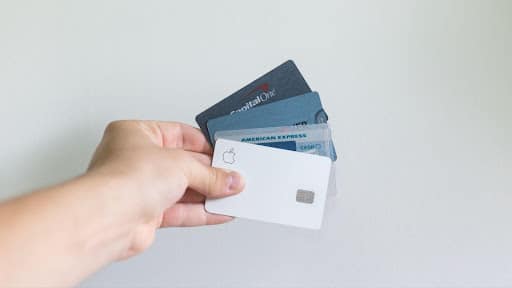How to Determine if You Should Refinansiere Kredittkort?
Making card payments each month might significantly reduce your take-home money. You could think that the battle is never-ending if you’re having trouble making those monthly payments. However, what if there are methods, or ways, to reduce or even erase your credit card debt or somehow remove your monthly payment?
Related Posts
Thankfully, there are options like these, and you might be able to benefit from them. The following have a few key advantages and disadvantages for each.
Table of Contents
Transfer the balance
As you may already be aware, credit card issuers do not permit transactions of this kind, thus you cannot pay off a particular card with another. However, there is still another technique to pay with another card indirectly using a card. We refer to it as a balance transfer.
With a balance transfer, you can refinance your credit card debt using a different card, acting as though you were paying off your previous one with the new one. After the transfer is complete, you’ll often have a much-reduced required payment over at least some of your balance—but there are certain requirements to fulfill.
While there are some balance transfer cards that charge a fee, there are many excellent cards that don’t. Transfers of balances are usually restricted. The credit limit on your new card will determine the amount of debt you are able to transfer.
To refinance a greater amount of debt than the limit permits, you may require a second balance transfer card, and maybe even a third. Alternatively, you might try giving the new card issuer a call and asking for a higher limit in order to move over your whole debt load.
With a balance transfer, you may often receive a reduced rate, combine several payments on your cards into one, and regain control over your debt. For a limited time, a number of balance transfer cards provide an introductory 0% introductory balance transfer rate.
Make sure you know when your special rate expires along with what the highest possible rate will be thereafter before transferring a debt. Using transferred balances cards to accumulate more credit card debt is not a good idea.
Once your balance has been transferred, create a budget, and consider canceling, putting away, or chopping up any cards that you no longer wish to use.
Combine your debts into a home equity loan
You might be able to consolidate your credit card debt by converting it into property equity debt if you’re a homeowner that has untapped equity. The worth of your house less the amount you still owe on your current mortgage is your equity.
Refinancing your mortgage and using the proceeds to settle your credit card debt is one approach to turn credit card debt into home equity debt. Obtaining a loan against your home’s equity and using the money to reduce or settle your debt is an additional option.
Instead of making several credit card payments each month, you will only have to make one, usually smaller, payment for your house loan. You might be able to refinance your credit card debt at a cheaper rate and with just one monthly payment if you own an equity-rich vacation or rental property.
Because your house serves as collateral, home loans often offer cheaper interest rates. Your lender may foreclose, and you can lose your house if you don’t make your payment. Credit cards can be secured by a deposit account, or they might be unsecured.

Obtain a personal loan for consolidation
If you are looking to refinance your credit card debt, borrowing money for debt consolidation can be a smart alternative to consider. Personal loans are generally taken out for large expenses such as a luxurious wedding, a once-in-a-lifetime holiday, or college expenses beyond tuition.
They are also used for combining debts and financial crises. You can look into these loans if you visit a comparison tool website, which allows you to compare loan options.
Two categories of personal loans exist:
Collateral for secured personal loans might take the form of a vehicle, boat, or savings account. Your lender may take possession of your collateral if you default on your payment. Personal loans that are not secured don’t need collateral. Your APR on this kind of loan will thus usually be greater for this reason.
You can refinance credit card debt using any kind of personal loan. Because of how common this tactic is, credit card loans are occasionally used to refer to personal loans. According to the loan you select and the current APRs on your cards, you might have a reduced rate and just have to make one monthly payment if you combine numerous credit cards into a single personal loan. You may save a lot of money on interest.

Locate a plan for debt management
Refinancing your credit card debt onto a new loan is not strictly part of a debt management plan. Rather, this approach is exactly what its name suggests: a debt management and repayment plan. It could be a wise choice to think about.
You must get in touch with a recognized nonprofit credit counseling organization in order to get started. Inform your credit counselor that you would want to arrange for a single monthly payment to be made against your credit card debt. The firm will utilize the money you provide them to pay your credit card issuers on your behalf.
Normally, you must pay the whole amount owed; but, if you enroll in a debt management plan, you may be eligible for reduced interest rates and other costs. Typically, your card accounts will be canceled, which may lower your credit ratings but will prevent you from taking on further debt.
A lot of people start debt management plans but never complete them. It could work for you if you’re prepared to commit to the program and pay the credit counseling organization a few small costs.
Without the assistance of a financial counseling organization (https://www.afcpe.org/certification/), you can still attempt to build up a plan for managing debt on your own. Speak with your credit card company about your possibilities for debt relief. Describe your financial situation and the kind of accommodations you believe will help you pay off the balances on your credit cards.
Pay off your debts
Your credit card debt may be settled through debt settlement, but the process is difficult. There are several risks, and your financial condition can deteriorate beyond what it is now. You must get in touch with a debt settlement business in order to employ this strategy. You will usually be told to cease making payments to your credit card providers.
Instead, you will send a single monthly payment through a debt settlement business, which will retain the funds until it is able to work out a reduced settlement sum with the credit card issuers.
Your credit card issuers will contact you with collections calls and letters until the debt settlement business transfers the funds to them. You will still be assessed interest, frequently at increased penalty costs, and you could also be assessed insufficient payment plus additional penalties.
It will require time to rehabilitate your credit when you skip payments, which can lower your credit ratings. To get what you owe them, your credit card issuers or your debt collection firms may file a lawsuit against you.
It can take many months for your credit card issuers to consent to talk with the loan settlement company. They can also choose to engage in no negotiations at all. If such is the case, you will still be responsible for the entire loan and your credit will suffer. Settlement of debts can be costly and dangerous. Rather than having less debt, you can wind up with more after paying a lot of fees.
When is it time to consolidate debt from credit cards?
You ought to combine your credit card debt if you’ve done your research, decided on a plan to lower your debt, made your decision, and if the time seems perfect. Before applying for an account transfer card as well as credit card consolidation loan, you might want to wait and establish a stronger history of on-time payments if your credit score isn’t too good.
More alternatives, cheaper rates, and greater card benefits are typically associated with having better credit.
When consolidating my debt, can I still use my credit card?
Depending on the type of debt consolidation plan you select, you may or may not be allowed to use your credit cards after you’ve consolidated your debt. Your credit card accounts could be terminated if you enroll in a debt management program or hire a debt settlement agency. You won’t be able to utilize your cards if that occurs.
“Should I use my cards?” is a more crucial issue to ask yourself if you decide on a course of action that permits you to maintain your card accounts open. Yes, you may keep using your credit cards as long as you can manage your money, create, and follow a budget, pay off your debts on time each month, and make your loan payments for debt consolidation.
After you combine your credit card debt, you shouldn’t use your cards any longer if you’re worried—which you should be—that you could use them to spend greater amounts than you can afford. Rather, you might like to:
- Put your cards in a safety deposit box at the bank, a drawer, or a safe.
- Give a family member your cards so they can hold them for you.
- Cut your cards apart.
- Request that your card companies cancel your memberships.
If you’re tempted to utilize your cards for more purchases than you should, canceling them could still make sense even if it would lower your credit score. Recall that the goal of combining your debts is to lower your monthly payment obligations, pay off more interest, and minimize your total debt, not to open up credit cards to allow you to spend more.